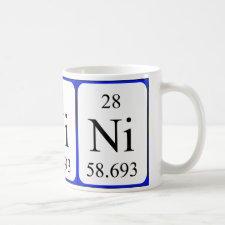
Authors: Nezhadali A, Pirouzmand M, Payehghadr M
Article Title: Determination of optimal adsorption-desorption conditions for selective removal of Ni(II) from petrochemical samples using ion imprinted nanosorbent.
Publication date: 2018
Journal: European Journal of Chemistry
Volume: 9
Issue: (1)
Page numbers: 57-62.
DOI: 10.5155/eurjchem.9.1.57-62.1685
Alternative URL: http://www.eurjchem.com/index.php/eurjchem/article/view/1685
Abstract: Nanoporous particles Ni(II) ion imprinted polymer (IIP), and non-imprinted polymer (NIP) in the absence of Ni(II) ion, with 18-70 nm dimensions were synthesized, and characterized by Fourier transform infrared, energy dispersive X-ray and nuclear magnetic resonance spectroscopic methods. Then, the surface area, pore size and structural composition of the products were characterized by Brunauer-Emmett-Teller and scanning electron microscope methods. Then, modified electrodes by the IIP for Ni(II) sensing and determination, were constructed and their catalytic activity were investigated by cyclic voltammetric method. Some parameters like desorption solvent, amount of sorbent, pH and contact time were optimized, and the measurements were all conducted under optimal conditions. The optimum pH for maximum sorption was obtained 7.8. In the optimum conditions, the maximum sorbent capacity of the IIP was obtained 371.9 μM/g. The limit of detection and relative standard deviation (n = 5) were obtained 1.3 ng/mLand 1.47%, respectively. The pre-concentration procedure revealed a linear curve within the concentration range of 10-6000 ng/mL and a good linearity with squared correlation coefficient of r2 0.9991 was achieved. The method was applied successfully for determination of Ni(II) ion in petrochemical samples.
Template and target information: nickel ion, Ni(II)
Author keywords: nanosorbent, dimethylglyoxime, cyclic voltammetry, Nanoporous particle, ion imprinted polymer, non-imprinted polymer



Join the Society for Molecular Imprinting

New items RSS feed
Sign-up for e-mail updates:
Choose between receiving an occasional newsletter or more frequent e-mail alerts.
Click here to go to the sign-up page.
Is your name elemental or peptidic? Enter your name and find out by clicking either of the buttons below!
Other products you may like:
 MIPdatabase
MIPdatabase









